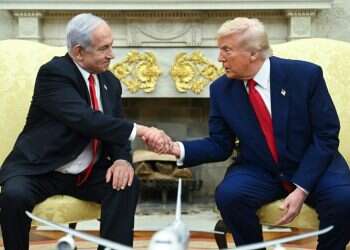U.S. President Donald Trump's decision to exit the 2015 nuclear deal continues to create global shock waves. In the next few days, the European countries signatories to the deal, Britain, France and Germany, are expected to convene and try to come up with ways to stop the landmark agreement from imploding. Even the Iranians are still in shock.
Trump's detractors, including a considerable portion of American media, argue that he has gone too far and that pulling the U.S. out of the deal could end up doing more harm than good. The rigid demands Trump has posed, including the immediate halt of Iran's ballistic missile program, have been slammed as "detached from reality" and some have even doubted that Iran was pursuing intercontinental ballistic missiles that could threaten the U.S.
But the reality is stronger than Trump's critics and on Wednesday, The New York Times – hardly a Trump supporter – exposed that Iran was developing ICBMs despite its very public pledge to the contrary.
According to the report, shortly before his death, Iranian scientist Gen. Hassan Tehrani Moghaddam, one of the forefathers of the Iranian missile program, oversaw the construction of a secret facility in Shahrud, in northern Iran, where missile development is believed to be ongoing.
Whether this was a random discovery or intelligence obtained in other ways, satellite images of the Shahrud site indicate that it was set up to manufacture and test large engines, probably solid fuel-operated ones – the kind used for long-range missiles. In other words, there may not be s smoking gun to prove Iran is pursuing nuclear military activities, but there is one proving its nefarious ballistic endeavors.
There is no need for another daring operation to extract a secret archive to convince the world that the Iranians have not abandoned the desire to develop long-range missiles that can carry nuclear warheads and would pose a threat to Europe and the U.S. All you have to do is read how one of Moghaddam's closest friends eulogized him, saying, "His entire life, he prepared for the great confrontation with the United States."
If anything, the satellite images prove Moghaddam may be dead, but his ballistic missile dream lives on. His successor, Gen. Majid Moussavi, was recently quoted by Iranian media as saying he believed an Iranian space program would be able to circumvent the ban Iran's ayatollahs have imposed on the development of long-range missiles for military purposes.
Now we have learned that the Iranians do not need to "circumvent" anything. All they have to do is keep lying to the world.



